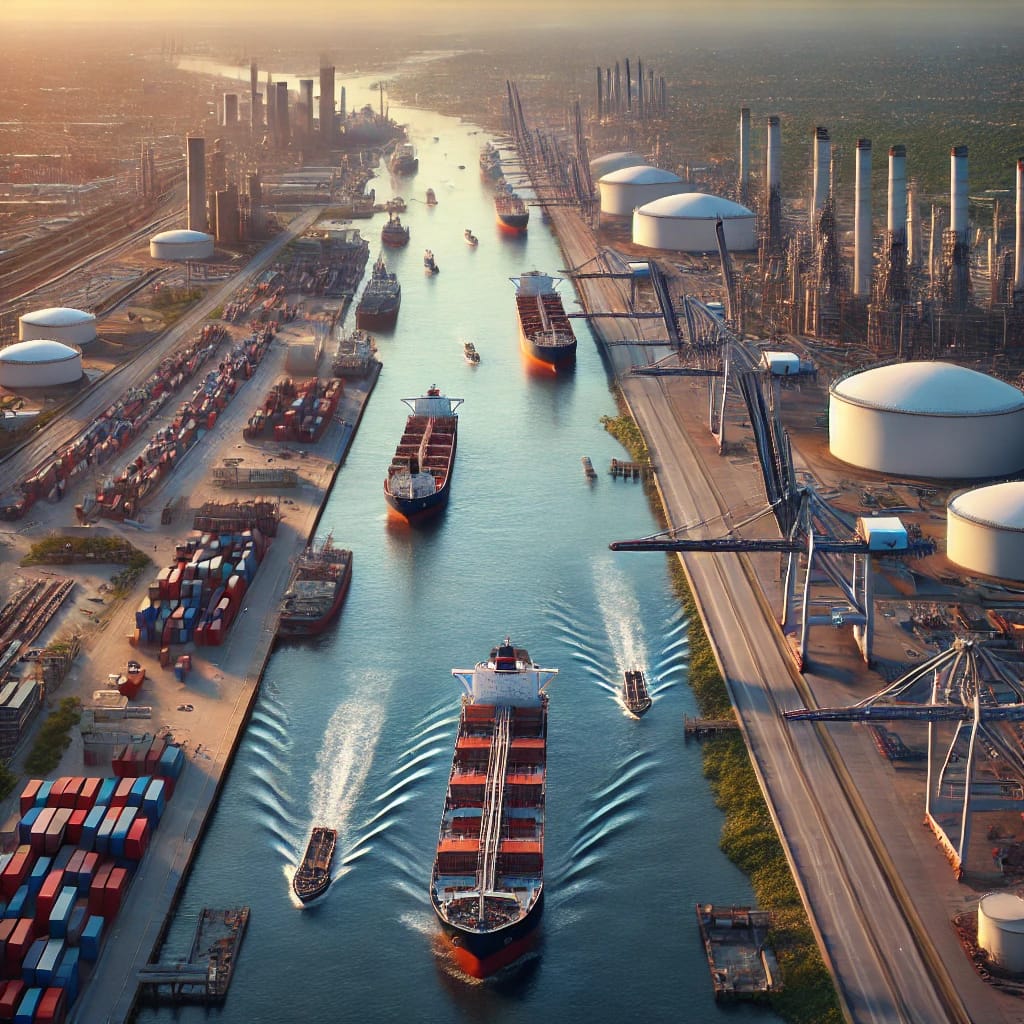
The Houston Ship Channel stands as one of the most vital arteries of global commerce. Connecting Houston to the Gulf of Mexico, this channel supports the movement of goods and energy resources across the world. With its strategic location and vast infrastructure, the Houston Ship Channel plays a key role in making the city one of the largest trade hubs in the United States.
The Origins and Development of the Ship Channel
The history of the Houston Ship Channel dates back to the early 20th century. It was officially opened in 1914, following years of dredging and engineering efforts that transformed Buffalo Bayou into a navigable waterway. The expansion was driven by Houston’s ambition to become a major port city, reducing dependence on Galveston and enhancing trade efficiency.

As trade volume grew, further investments were made to widen and deepen the channel. The completion of the Houston Ship Channel positioned the city as a major hub for global shipping, giving it direct access to international markets.
Energy and Petrochemicals: The Backbone of the Channel
One of the channel’s most significant contributions is its role in supporting oil and petrochemical industries. Houston is home to some of the largest refineries and petrochemical plants in the world, many of which are situated along the channel. Tankers regularly transport crude oil and refined products to and from Houston, facilitating global energy distribution.

This concentration of energy infrastructure has made Houston a leader in both energy exports and imports, with the port handling millions of barrels of oil annually. As the demand for energy continues to grow, the channel remains critical in ensuring stable and efficient trade.
Global Trade and Container Shipping
Beyond energy, the Houston Ship Channel plays a crucial role in containerized trade. It is one of the busiest ports in the United States, handling goods ranging from consumer products to industrial equipment. The efficient movement of these goods supports local industries and contributes to the city’s economic growth.

The port’s proximity to railways, highways, and pipelines provides seamless connections to markets across North America. This multimodal transportation network enables Houston to remain competitive in the global marketplace, attracting trade partners from Asia, Europe, and Latin America.
Environmental Challenges and Solutions
The rapid expansion of industrial activity along the ship channel has raised concerns about environmental impact. The channel’s proximity to urban areas increases the risk of pollution, affecting air and water quality. Flooding is another ongoing challenge, particularly during hurricanes and heavy storms.

In response, Houston has taken steps to balance trade and environmental sustainability. Initiatives include improved emissions standards, habitat restoration projects, and investments in flood mitigation. These efforts aim to reduce the environmental footprint while ensuring the long-term viability of the channel.
Innovation and the Future of the Ship Channel
To meet the growing demands of global trade, the Houston Ship Channel is undergoing further expansions. The Port of Houston Authority has launched the Project 11 initiative, which aims to deepen and widen the channel, allowing larger vessels to navigate safely. This expansion will improve efficiency and accommodate future trade growth.
In addition, the port is embracing technology and innovation. Automation in cargo handling and smart port solutions are being implemented to enhance operational efficiency. Sustainability also remains a priority, with increased investments in clean energy infrastructure and alternative fuels for shipping.